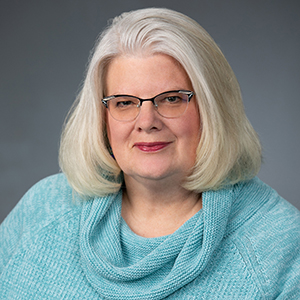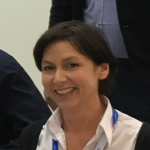ConVEx Minneapolis Presentations
The ConVEx Minneapolis program offers career-empowering knowledge, practical solutions, best practices, and the best networking in the industry.
IMPORTANT PROGRAMMING NOTE
The lineup and schedule posted here are based on current commitments from presenters and are subject to change.
Tuesday ~ April 9, 2024
Leveraging ChatGPT for Compelling DITA Implementation Business Cases
In the evolving field of technical communication, adopting Darwin Information Typing Architecture (DITA) is a critical standard for efficient content organization and delivery. And implementing it can be expensive! This presentation explores using ChatGPT, an advanced language model, to develop a compelling business case for DITA integration. Bring your laptop or phone as we practice ChatGPT’s capabilities in narrative generation, data analysis, and simulating stakeholder dialogues, which are essential for emphasizing the benefits of DITA. The session will focus on how ChatGPT can articulate DITA’s strategic advantages, cost-effectiveness, and competitive edge. This approach is particularly beneficial for technical communicators, content strategists, and organizational decision-makers considering the adoption of DITA to enhance their content management processes.
Amanda Patterson, Hunter Douglas
 Amanda’s career has predominantly involved documentation for automated manufacturing equipment and consumer goods manufacturing. Currently, she’s the Technical Communications Manager at Hunter Douglas, focusing on content strategy, large-scale software implementation, DITA adoption, and team professional development. Additionally, Amanda serves several leadership roles with the Society of Technical Communication (STC). Holding a Ph.D. in Comparative Literature with a focus on Sci-Fi and future human experiences, Amanda often ponders her robotic existence.
Amanda’s career has predominantly involved documentation for automated manufacturing equipment and consumer goods manufacturing. Currently, she’s the Technical Communications Manager at Hunter Douglas, focusing on content strategy, large-scale software implementation, DITA adoption, and team professional development. Additionally, Amanda serves several leadership roles with the Society of Technical Communication (STC). Holding a Ph.D. in Comparative Literature with a focus on Sci-Fi and future human experiences, Amanda often ponders her robotic existence.
Unlock your Content's Potential: A transformative information management case study
Unlock the full potential of your content by exploring the strategic implementation of the Darwin Information Typing Architecture (DITA) within an enterprise.
Are components merely a means to an end, or do they hold the key to unleashing your content’s power? Join us for a comprehensive case study, navigating the journey from creation to review, publication, revision, and repurposing.
Gain insights into the tangible benefits of deploying structured component content in the enterprise. This session delves deep into the horizon beyond initial implementation, offering a practical exploration of the role and impact of DITA in shaping the future of content management.
Mike Rice, Content Rules
Jonathan Chandler, Intralox

Mike Rice, Senior Solutions Architect at Content Rules, brings over 25 years of structured content expertise to our team. Mike leverages his background as an information architect, an ethnographic practitioner, and an award-winning contributor to the field of user-centered product design. This experience gives him a broad perspective, seeing the strategic changes needed to enhance content creation, management, translation, and user experiences.
Beyond his professional life, Mike enjoys outdoor adventures camping and backpacking. But he feels equally at home whether he’s visiting Brooklyn or the Adirondacks.

Jonathan Chandler is a seasoned technical writer, manager and content strategist with over 15 years of industry expertise. As a manager at Intralox, he leads a team of writers and drives the strategy to create content at scale. Beyond his professional pursuits, he enjoys flamenco dancing, spelunking, and adding fictional hobbies for his bios.
Content Strategy When AI Is Your Audience
For years, when we’ve talked about Content Strategy, when we’ve developed personas and roles, when we’ve stressed things like controlled vocabulary, voice, organization, and so forth – we’ve had a human audience in mind. Now, though, there is a whole new audience to think about – Artificial Intelligence (AI). How does that change how and what we write? How can we write content that both engages our human audience and serves to effectively train our AI systems? Can the same content set do both? Does it depend on what we want to use AI for? In this presentation, Leigh explores how we might need to rethink our approach if we want to use our content to teach the machines to teach us.
Leigh White, Madcap Software
 Leigh White has by now worn almost all the DITA hats: authoring, information architecture, stylesheet development, and conversion. At MadCap Software, formerly IXIASOFT, she’s done everything from implementations to training to feature design to product ownership. Leigh’s also a conference veteran, having spoken on XML, DITA, content management systems, content conversion, and even Frank Lloyd Wright over the years. She is the author of “DITA For Print: A DITA Open Toolkit Workbook” and a contributor to “The Language of Content Strategy.” In her spare time, she hikes, conlangs, plans the perfect murder mystery plot, and makes things from wood.
Leigh White has by now worn almost all the DITA hats: authoring, information architecture, stylesheet development, and conversion. At MadCap Software, formerly IXIASOFT, she’s done everything from implementations to training to feature design to product ownership. Leigh’s also a conference veteran, having spoken on XML, DITA, content management systems, content conversion, and even Frank Lloyd Wright over the years. She is the author of “DITA For Print: A DITA Open Toolkit Workbook” and a contributor to “The Language of Content Strategy.” In her spare time, she hikes, conlangs, plans the perfect murder mystery plot, and makes things from wood.
More than Words: Identifying the priority of content
There are many priorities when managing your content: risk, compliance, consistency, and cost to name a few. Join us as we discuss how focusing on and managing consistency can create a foundation that can support your entire organization, including tackling these challenges:
- How to define a strategy on content consistency, take ownership and create a business case, with real world statistics on efficiencies and savings.
- How to manage content between multiple departments, like service and marking and finding the synergy and managing the differences.
- How to improve on readability and usability, and set goals for new and legacy content, as quality isn’t just a score.
Berry Braster, Etteplan
Randee Napp, Almon Inc.

Berry Braster is Technology Director at Etteplan, with over 4000 specialists in engineering, IoT and technical documentation. Etteplan’s 850 technical writers use controlled language on a daily basis and have also trained over 3500 technical writers around the globe on quality content writing. Berry also heads the HyperSTE unit at Etteplan, a content quality checker that assists writers in creating clear and consistent content.

Randee Napp has developed content for internal and external stakeholders in the OEM sector for over 25 years. She is the General Manager of Enterprise Solutions at Almon Inc. and her role also includes creating content solutions for clients.
Beyond the Hype: A Chat GPT-enabled environment with actual impact
Let’s be honest – too many companies are scrambling to offer an AI-powered experience just because everyone else is. Many teams have been instructed to launch an AI project without exactly knowing why?
In this candid conversation with Zoomin’s Joe Gelb, Joe Zucker will share how Pega embarked on an AI project that’s rooted in tangible, high impact goals round improving findability and accuracy. Joe will share how his team went beyond the AI hype to design a project with true benefits and lasting impact.
Joe Zucker, Pega
Joe Gelb, Zoomin Software

An experienced content platform and tools architect, Joe has been the driver for many XML-based documentation department delivery and process initiatives.
From his work at companies like Pega, ServiceNow and Automation Anywhere, he is a huge advocate for implementing solutions that leverage automation, open-source software, and in-house resources. Joe strives to provide creative answers that support an excellent customer experience.
 Joe Gelb has more than 20 years of experience helping enterprises implement, maintain, and capitalize on structured content. At Zoomin, he has spearheaded the development of advanced technology solutions for digital experience. Prior to founding Zoomin, Joe was the CTO at Live Linx, a leading provider of software and system integration services for technical product information.
Joe Gelb has more than 20 years of experience helping enterprises implement, maintain, and capitalize on structured content. At Zoomin, he has spearheaded the development of advanced technology solutions for digital experience. Prior to founding Zoomin, Joe was the CTO at Live Linx, a leading provider of software and system integration services for technical product information.
All Aboard the Content Management Train!
You determined that the time is now to migrate your technical publications content and processes to a DITA XML-based component content management system (CCMS). Having topic-based content in a machine-readable platform will streamline the creation, revision, and translation of this content and get it ready for future delivery online and by artificial intelligence applications.
We took some lessons learned from previous attempts to move to a CCMS and adopted a change leadership model. By listening, persuading, and informing all of our stakeholders, we made our business case, secured funding, and gained buy-in from stakeholders across the company, which is paying dividends as we move into implementation.
Matthew Abe, Graco
 Matt Abe is a technical writer and technical publications manager with experience in manufacturing, technology, and IT services. He is currently a senior technical writer at fluid handling equipment manufacturer Graco Inc. in Minneapolis, MN. Matt’s last CIDM conference presentation was in 2014 at the Best Practices conference.
Matt Abe is a technical writer and technical publications manager with experience in manufacturing, technology, and IT services. He is currently a senior technical writer at fluid handling equipment manufacturer Graco Inc. in Minneapolis, MN. Matt’s last CIDM conference presentation was in 2014 at the Best Practices conference.
Having EI the Cornerstone of your AI Strategy
As AI continues to integrate into various sectors, the significance of emotional intelligence in its development becomes paramount. This session delves into the profound impact of emotions and needs-based communication on AI systems. Participants will gain insights into identifying volatile words and phrases, learning strategies to mitigate their negative effects. Furthermore, the discussion emphasizes the importance of establishing ethical standards, values, and trust around AI policies.
Bill Stierle, Subtest Solutions
 Bill Stierle provides a powerful and groundbreaking understanding of everyday language which enables people to interact and communicate in a healthy, compassionate, and productive way. Over the last 37 years, Bill has been sharing the keys that unlock the secrets to how people’s thinking, behaving, and beliefs impact their quality of life. What began with his search to understand difficult personal interactions led to a consulting career that transforms personal relationships as well as the companies and executives who experience his work. Bill has mastered a unique blend of emotional intelligence expertise which accelerates your understanding of emotions and language.
Bill Stierle provides a powerful and groundbreaking understanding of everyday language which enables people to interact and communicate in a healthy, compassionate, and productive way. Over the last 37 years, Bill has been sharing the keys that unlock the secrets to how people’s thinking, behaving, and beliefs impact their quality of life. What began with his search to understand difficult personal interactions led to a consulting career that transforms personal relationships as well as the companies and executives who experience his work. Bill has mastered a unique blend of emotional intelligence expertise which accelerates your understanding of emotions and language.
Minimalism: It’s bigger on the inside
Travel in the TARDIS with The Doctor, K-9 David, and our multimedia companions to learn about minimalism. Watch as we use our sonic screwdriver to analyze our audiences and identify which topics can be minimalized for different users and product lines. Our companion, Multimedia, enables us to reduce words and provide visual alternatives that make it easier for customers to understand complex topics.
Laura Krefft & David Stencil, The Toro Company

Laura Krefft, a Whovian, has a BS degree in Technical Communications and has worked as a Technical Writer for The Toro Company for 12 years. She is passionate about training and minimalism. She is leading the team to drive consistency across the company’s brands.
One thing she has not learned how to minimalize is the number of kittens she fosters at one time.

After receiving his BS degree in Technical Communication, David Stencil has spent the 10+ years learning the art of technical writing and illustrating as a Technical Writer at The Toro Company. Most recently, David has been focused on the company’s cutting-edge HAVEN autonomous robotic mower. While working on the robotic mower project, he has developed high-end app content while maintaining communication with key project stakeholders and working closely with our Multimedia Designers to develop animations, graphics, and content that all ties together. David is a team player who always has his teammates and our end-users in mind.
AI, Products, Tours and UX - Rocket's new documentation experience
Over the past year, Rocket Software invested heavily in improving the product documentation experience for our customers. One of our most common complaints was “I can’t find my product documentation” so we implemented solutions to make documentation more findable and relevant. We introduced cutting-edge measures including UI/UX enhancements, a product tour, and exciting AI components. The presentation will share the journey of each improvement including planning, testing, and feedback.
Margot Miksis, Rocket Software
 Margot Miksis is a Senior Information Architect with Rocket Software. She has over 12 years of experience in technical communications and is passionate about organizing content, enhancing searchability, and automating processes. Margot has implemented and administered Zoomin paired with the Ixiasoft CCMS at two companies and supports a global team of information developers in their daily use of the tools.
Margot Miksis is a Senior Information Architect with Rocket Software. She has over 12 years of experience in technical communications and is passionate about organizing content, enhancing searchability, and automating processes. Margot has implemented and administered Zoomin paired with the Ixiasoft CCMS at two companies and supports a global team of information developers in their daily use of the tools.
When not working, Margot enjoys being a new mom to her 1 year old daughter. (There isn’t time for much else!)
Configured, Converted, and Migrated, Oh My! Our CCMS journey
We’ve overhauled our processes, trained our team, and moved our content into a new system with new publishing plugins, a new information model, and a new outlook on what we can achieve. We’ll do a recap of how we got started, explain the past year’s progress, and give a sneak peek into what’s coming up next for us.
Sarah Rowe & Bobbi Werner, Baxter
 Sarah has a passion for increasing efficiency with technology. She is a self-motivated mom of twins whose superpower is figuring out systems and processes. Sarah is a CCMS admin and senior technical writer for Baxter, a global manufacturer of medical devices and therapies. She is a member of CIDM and STC. Sarah enjoys riding her e-bike, baking with her kids, and she is addicted to pickleball.
Sarah has a passion for increasing efficiency with technology. She is a self-motivated mom of twins whose superpower is figuring out systems and processes. Sarah is a CCMS admin and senior technical writer for Baxter, a global manufacturer of medical devices and therapies. She is a member of CIDM and STC. Sarah enjoys riding her e-bike, baking with her kids, and she is addicted to pickleball.
 Bobbi Werner is Senior Manager, Technical Communication, at Baxter’s Front Line Care division. She leads a team of technical writers, illustrators, and specialists to create, update, and release user documentation for medical devices. Bobbi is a member of CIDM and STC. She is an STC Fellow and currently serves as Treasurer on the STC Executive Board.
Bobbi Werner is Senior Manager, Technical Communication, at Baxter’s Front Line Care division. She leads a team of technical writers, illustrators, and specialists to create, update, and release user documentation for medical devices. Bobbi is a member of CIDM and STC. She is an STC Fellow and currently serves as Treasurer on the STC Executive Board.
Are Taxonomies Still Needed in the Age of AI?
Many contend that Artificial Intelligence (AI) negates the need for a taxonomy as AI has the ability to crawl very large data and/or content repositories and draw relationships between concepts. This presentation outlines how taxonomies and ontologies can inform AI systems and ensure the proper breadth, depth, and consistency of an AI application across content sets. It will outline recommended approach that leverages taxonomies as part of AI or machine learning projects. Discussion will also cover potential pitfalls and mitigation methods.
Rebecca Schneider, AvenueCX
 Rebecca is co-founder of AvenueCX, an enterprise content strategy consultancy. Her areas of expertise include content strategy, taxonomy development and structured content. She has guided content strategy in a variety of industries: automotive, semiconductors, telecommunications, retail, and financial services.
Rebecca is co-founder of AvenueCX, an enterprise content strategy consultancy. Her areas of expertise include content strategy, taxonomy development and structured content. She has guided content strategy in a variety of industries: automotive, semiconductors, telecommunications, retail, and financial services.
Publishing Microcontent for Change Tracking
Microcontent is more than just a catchy phrase. It has provided practical benefits that are crucial for publishing our client’s content. This presentation will showcase how we, together with our client, have leveraged the flexibility of microcontent to build a highly customized publishing solution. This approach allows end users and regulators to track and govern changes of information more effectively and efficiently.
Peihong Zhu, Precision Content
 Peihong Zhu is an Information Architect at Precision Content and a member of the Ontario chapter of STC. With a previous career in bioinformatics, Peihong understands the importance of technologies in information exchange. She has received formal training in technical writing and DITA XML. Peihong’s current work focuses on helping clients publish structured content. Peihong is passionate about adopting innovative information architecture approaches to solve content problems.
Peihong Zhu is an Information Architect at Precision Content and a member of the Ontario chapter of STC. With a previous career in bioinformatics, Peihong understands the importance of technologies in information exchange. She has received formal training in technical writing and DITA XML. Peihong’s current work focuses on helping clients publish structured content. Peihong is passionate about adopting innovative information architecture approaches to solve content problems.
Harnessing AI-Power: Enhancing technical writing with intelligent prompts
In the past few years, the integration of Artificial Intelligence (AI) into various software development tools has witnessed remarkable growth, like the creation of GitHub Copilot software developer assistant. However, the potential of AI extends far beyond code completion. In this presentation, we will explore how AI can revolutionize content creation. We will delve into ways in which AI-powered prompts can serve as valuable writing companions covering all three phases of content creation: research, writing, and review.
Alex Jitianu, Syncro Soft/Oxygen XML Editor
 Alex Jitianu has been working for more than 15 years for Syncro Soft Ltd., the producer of the popular Oxygen XML Editor. During this period, his main focus has been in the development of technical documentation tools and DITA specific support.
Alex Jitianu has been working for more than 15 years for Syncro Soft Ltd., the producer of the popular Oxygen XML Editor. During this period, his main focus has been in the development of technical documentation tools and DITA specific support.
Oxygen AI Positron Assistant - integrating AI across Oxygen tools
Along with many new actions and functionality that was added, the Oxygen AI Positron was made available also as add-on for the Oxygen Web Author browser-based editor as well as inside the Oxygen Content Fusion collaboration platform.
More, the Oxygen AI Positron Enterprise add-on makes is possible now to connect directly to your own AI engine such as via your Open AI account or Azure Open AI service.
We made a selection of really interesting usage scenarios, showing the Oxygen AI Positron Assistant in action, to allow you to understand how exactly it will improve your technical documentation writing process.
Alex Jitianu, Syncro Soft/Oxygen XML Editor
 Alex Jitianu has been working for more than 15 years for Syncro Soft Ltd., the producer of the popular Oxygen XML Editor. During this period, his main focus has been in the development of technical documentation tools and DITA specific support.
Alex Jitianu has been working for more than 15 years for Syncro Soft Ltd., the producer of the popular Oxygen XML Editor. During this period, his main focus has been in the development of technical documentation tools and DITA specific support.
What DITA Elements Should I Use Anyways?
Join Kat Reierson as she shares DocuSign’s journey in establishing consistent DITA element usage within our product documentation team. Over the past year, we identified and defined key DITA elements to ensure cohesive content creation. This initiative aimed to provide a standardized content experience for our customers visiting our support site. Learn how we determined the optimal use of DITA elements, enhancing the accessibility and clarity of our product documentation. Join our session to gain insights into fostering uniformity and improving customer engagement through structured DITA element application.
Kat Reierson, DocuSign

With over a decade in technical writing and management, I lead a dynamic team at DocuSign CLM, specializing in user-centric content for a cloud-based contract lifecycle management solution. My proficiency includes leveraging DITA to simplify complex technical information, ensuring clarity and accessibility for our users.
I spearhead seamless project coordination, driving efficiency and continuous improvement in documentation workflows through structured DITA element implementation. Collaborating across departments, I establish standards for effective cross-team communication and knowledge dissemination. My goal is to optimize user success by facilitating robust content management and quality assurance processes.
Enhancing Search Experiences: Content Strategy and Knowledge Graphs
Join us to explore the dynamic interplay between content strategy, taxonomies, ontologies, and knowledge graphs and their impact for your AI, chatbot and search projects. By breaking down the pivotal role of context surrounding content and data, we’ll provide you with practical tips drawn from our hard-won experience. Delve into how this helps with findability and leave with insights for your next project.
Lief Erickson, Intuitive Stack
Joe Gregory-DeBernardi, DeBonautics
 Lief is a co-founder and principal consultant at Intuitive Stack. He has held positions as a technical writer, information architect, and content strategist. He holds a master’s degree in Content Strategy from FH Joanneum (Graz, Austria), where he teaches IA. He is a contributor to the DITA-OT project and presents on topics ranging from ContentOps, taxonomies, and search.
Lief is a co-founder and principal consultant at Intuitive Stack. He has held positions as a technical writer, information architect, and content strategist. He holds a master’s degree in Content Strategy from FH Joanneum (Graz, Austria), where he teaches IA. He is a contributor to the DITA-OT project and presents on topics ranging from ContentOps, taxonomies, and search.
 Joe boasts nearly two decades of experience crafting scalable content and metadata management systems. At DeBonautics, Joe focuses his work on taxonomies, knowledge graphs, and linked data to support search, findability, and dynamic delivery applications. For the past decade, his expertise has centered on enterprise metadata framework development supporting content ops, search, web experiences, chatbots, and beyond.
Joe boasts nearly two decades of experience crafting scalable content and metadata management systems. At DeBonautics, Joe focuses his work on taxonomies, knowledge graphs, and linked data to support search, findability, and dynamic delivery applications. For the past decade, his expertise has centered on enterprise metadata framework development supporting content ops, search, web experiences, chatbots, and beyond.
Beyond the Help Desk: Exploring the Future of Customer Self-Service in B2B and B2C
In an era where digital transformation is paramount, the role of customer self-service has become increasingly significant. Modern customers value convenience, speed, and efficiency. They prefer having the ability to resolve issues, find information, and complete transactions on their own terms, without the need to wait in line or on hold for customer support.
This desire for immediacy and autonomy has propelled businesses to rethink their approach to customer service, making self-service options not just an add-on but a central component of the customer experience.
Drawing on comprehensive survey data from the 2024 State of Customer Self-Service Support Survey, Scott Abel, The Content Wrangler, will share current perceptions, effectiveness, and business impacts of self-service support strategies.
Attendees will gain insights into the types of self-service experiences being prioritized—whether aimed at employees, customers, prospects, or others—and the
common challenges consumers encounter in these environments.
Moreover, Scott will unveil which organizational teams are spearheading self-service strategy and implementation efforts, and the software platforms empowering these exceptional customer experiences.
This presentation promises a forward-looking perspective on how businesses can navigate the self-service paradigm to enhance customer satisfaction, operational efficiency, and ultimately, drive business success in the digital age.
Scott Abel, The Content Wrangler

Dubbed “The Content Wrangler,” Scott Abel is the Founder and President of The Content Wrangler Inc, a global content strategy consultancy. Scott Abel is a content management strategist and exponential growth evangelist. He specializes in helping content-heavy organizations improve the way they author, maintain, publish and archive their information assets.
Scott publishes a series of content strategy books for XML Press and is the producer of several content industry events including Technical Documentation Roundup and Information Development World.
Mayo's DITA Implementation
Abstract Coming Soon
Kris Eberlein, Mayo

Data-driven Content Delivery - Servitizing DITA content with iiRDS
Learn how SANDVIK Mining and Construction GmbH together with the RWS Group made semantic technical content easily findable for Bolter Miners.
The right content at the right time for the right user at the point of service.
Within the scope of a master’s thesis, assessment was conducted on how DITA topics in CCMS Tridion Docs can be published/delivered to a Web Content Management System by tagging DITA topics with taxonomy to create implicit relationships based on product-structure and iiRDS metadata to drive the user experience.
Martina Schmidt, NINEFEB
Alvin Reyes, RWS

Martina has her Master in Technical Product Management. She started working at Starlinger & Co GmbH. as Technical Writer and later as Technical Instruction Manager, who is the world’s leading supplier of machinery for producing woven plastic packaging, plastic recycling and refinement. Since 2021, Martina is working at NINEFEB GmbH.
Where she works in Technical Writing and Illustrating. She also creates eLearning concepts and is involved in consulting. For more than 1 year she started a Master certificate program, which gave the Impulse to work on a joint group with RWS and SANDVIK, with aim to semantically enable technical content.
 As a business architect with RWS, Alvin consults with enterprise customers to improve their end-to-end Content Supply Chain across Web, Structured Content, and Language technology and processes. Starting as a Tridion customer, he has since shared over 300 blog posts on Tridion Sites and content technology.
As a business architect with RWS, Alvin consults with enterprise customers to improve their end-to-end Content Supply Chain across Web, Structured Content, and Language technology and processes. Starting as a Tridion customer, he has since shared over 300 blog posts on Tridion Sites and content technology.
Integrating iiRDS into DITA to Deliver Intelligent Content
DITA was designed as a standard for the development and maintenance of content. While the DITA architecture includes the ability to manage metadata, the native metadata in the standard is rudimentary. iiRDS, the Intelligent Information Request and Delivery Standard, is a metadata standard designed to be integrated into DITA source. Integrating iiRDS into DITA provides more effective retrieval of relevant content by providing users with more targeted search results. This presentation will illustrate how the integration of iiRDS metadata into DITA source can result in content that more effectively meets the needs of specific users, returning not only relevant part and solution information, but additional information such as potential hazards.
Harald Stadlbauer, NINEFEB
Bob Johnson, Jana, Inc.
 Harald is General Manager of the NINEFEB Group of companies, dedicated to the advancement of Technical Communication, like Technical Documentation as well as eLearning to the intelligent delivery of it. He is actively engaged in developing iiRDS further as well as contributing to the AAS (Asset Administration Shell) sub-models of the IDTA (Industrial Digital Twin Association).
Harald is General Manager of the NINEFEB Group of companies, dedicated to the advancement of Technical Communication, like Technical Documentation as well as eLearning to the intelligent delivery of it. He is actively engaged in developing iiRDS further as well as contributing to the AAS (Asset Administration Shell) sub-models of the IDTA (Industrial Digital Twin Association).

Bob Johnson has worked with DITA since 2006 as an author, information architect, and content strategist. He has worked with DITA in software, medical devices, and medical reference content. Bob has worked with accessibility since 2008 and is known as an advocate for accessible technical content.
Accessibility and DITA: A 10-year retrospective
At DITA North America 2014, Bob Johnson presented on implementing accessibility in DITA source to publish accessible HTML. Since then, accessibility enhancements have been added to DITA and accessibility improvements have been implemented in the DITA Open Toolkit. More importantly, accessibility practice and disability rights have also seen significant change in the past ten years.
In this presentation, Bob will review the changes in DITA, in the DITA OT, and especially developments in accessibility practice and disability rights to bring DITA professionals up to date on accessibility facets of DITA and technical communication practice.
Bob Johnson, Jana, Inc.
 Bob Johnson has worked with DITA since 2006 as an author, information architect, and content strategist. He has worked with DITA in software, medical devices, and medical reference content. Bob has worked with accessibility since 2008 and is known as an advocate for accessible technical content.
Bob Johnson has worked with DITA since 2006 as an author, information architect, and content strategist. He has worked with DITA in software, medical devices, and medical reference content. Bob has worked with accessibility since 2008 and is known as an advocate for accessible technical content.
Bob is currently a content strategy consultant with JANA, Inc. In addition, he co-facilitates the Boston DITA User’s Group.
Leveraging Generative AI for Improving User Enablement
We are living in a whirlwind era of technological innovations that unfolded over decades. Seeing the future is never easy, especially when it’s constantly changing, the only way to tackle this is to start the journey.
As content developers, we have been developing documentation over the years and eventually, it becomes a monolithic database of knowledge. By unleashing the power of generative AI, succinct information can reach the users when indispensable and improve the experience bar of your readers.
In this session, I will share some ideas and best practices on how you can embrace the early stages of exploring generative AI for your content starting from research and analysis to the adoption and value realization phase.
Meenakshi Dwivedi, SAP
 Meenakshi is a User Assistance Development Architect at SAP. She has over 15 years of experience in technical communications, learning and development, and project management. She specializes in content strategy, DITA XML-based architecture, information architecture, and data classification metadata topics. Actively involved in organization-wide mentor programs. Meenakshi has a post-graduate degree in Computer Applications from Bangalore University in India.
Meenakshi is a User Assistance Development Architect at SAP. She has over 15 years of experience in technical communications, learning and development, and project management. She specializes in content strategy, DITA XML-based architecture, information architecture, and data classification metadata topics. Actively involved in organization-wide mentor programs. Meenakshi has a post-graduate degree in Computer Applications from Bangalore University in India.
Replatforming an Early DITA Implementation: Lessons learned and advice
The FASB and the GASB are independent, not-for-profit standard-setting bodies charged with establishing and improving financial accounting and reporting standards. The FAF provides operational support for this work, including publishing.
In 2009, the FAF was an early adopter of DITA and a CCMS. Ten years later, they began an initiative to refresh the DITA content model and move to a new CCMS. In this case study, we’ll discuss several unique challenges: a content model built on a draft DITA specification (pre-1.0), migrating additional content from DocBook to DITA, streamlining systems and workflows, adhering to legacy constraints while leveraging new technology, and managing interactions among multiple vendors.
Emilie Herman, Financial Accounting Foundation
Bill Swallow, Scriptorium

Director of Publishing at the Financial Accounting Foundation
Emilie is a 25-year veteran of the publishing industry, helping authors create and develop content for print and digital formats. She has been with the Financial Accounting Foundation since 2017.
 Director of Operations at Scriptorium
Director of Operations at Scriptorium
Bill has been a key player in the content industry since the beginning of his career. He’s worked in a variety of content roles, picking up critical skills and perspectives along the way. He began his career in localization production, moving into online help development, technical writing, documentation management, and consulting.
Content Guides: Using specialized bookmaps to manage complex content
For years, Toro Technical Publications had struggled to maintain common structures throughout our publications with similar language in different products. We eventually performed an exhaustive content review and rebuild, using publications we called content guides to track the objects in our pubs and their relationships to other content.
With our move to the DITA architecture, we took advantage of keys, bookmaps, and a few specializations of our own to give the authors a new, more automated version of the content guides. This new system uses overloaded bookmaps in our CMS to contain and maintain relational structures for whole product families. Please join us as we demonstrate our system and discuss how it is changing authoring at The Toro Company.
Andrew Pieper & Anna Eskola, The Toro Company
 Andrew Pieper has a BS degree in English: Technical Communications and has been working in the technical authoring field for more than 30 years, the last 26 at The Toro Company. In 2003, he brought XML technologies to Toro and has been leading and developing the information architecture since. In 2016, he became Toro’s Information Architect full time, leading Toro’s efforts to move to the DITA architecture and topic-based authoring, management, review, and delivery systems. He currently serves as the chair for the PTC User: Technical Authoring, Management, and Delivery Technical Committee.
Andrew Pieper has a BS degree in English: Technical Communications and has been working in the technical authoring field for more than 30 years, the last 26 at The Toro Company. In 2003, he brought XML technologies to Toro and has been leading and developing the information architecture since. In 2016, he became Toro’s Information Architect full time, leading Toro’s efforts to move to the DITA architecture and topic-based authoring, management, review, and delivery systems. He currently serves as the chair for the PTC User: Technical Authoring, Management, and Delivery Technical Committee.

Anna Eskola has a BS degree in Professional Communications and Emerging Media and has been working as a Technical Writer at The Toro Company for 8 years. She is the co-lead for the graphical instructions and user testing efforts at Toro. She is also passionate and well-versed in converting publications to DITA and managing this content using content guides.
The Content Triforce: DITA, metadata, and microcontent
Content that meets the needs of an organization and its users requires standards for
• structuring
• describing, and
• guiding the writing of content.
This is true even more so with AI and internet-connected devices when content is used by humans and machines.
DITA helps organizations meet the first of these requirements by providing a standard to structure content, but it needs help to describe content and guide the writing of content.
Enter its helpers: metadata and microcontent.
This presentation will explore how a metadata standard, such as iiRDS, and microcontent help to fill in the gaps left by DITA to create valuable, targeted content that has a clear audience, purpose, and intended user response.
Ted Wolff, Precision Content
 Ted Wolff is an Information Architect at Precision Content Authoring Solutions Inc with a wide variety of experience in structured content and technical communication. Ted has worked across multiple industries, including finance, insurance, manufacturing, transportation, and software development. He has also worked across content roles to hone a well-rounded content perspective, from content development, tools administration, team management, and consulting.
Ted Wolff is an Information Architect at Precision Content Authoring Solutions Inc with a wide variety of experience in structured content and technical communication. Ted has worked across multiple industries, including finance, insurance, manufacturing, transportation, and software development. He has also worked across content roles to hone a well-rounded content perspective, from content development, tools administration, team management, and consulting.
Meet your New Audience: Artificial Intelligence
Audience analysis has always been central to the development of technical communication. Writers carefully craft content to meet the needs of their target users. Now, as more and more users turn to AI as their source of information, they become in effect an indirect audience. Instead, our direct audience is the AI tool who will in turn disseminate information to the user as it sees fit, according to its analysis of its audience. How does this change affect the way we should write?
Dawn Stevens & Dana Aubin, Comtech Services
 Dawn Stevens is the President, and owner of Comtech Services and the Director of the Center for Information-Development Management. With over 35 years of experience, including more than 20 years at Comtech, Dawn has practical experience in virtually every role within a documentation and training department, including project management, instructional design, writing, editing, and multimedia programming. With both engineering and technical communication degrees, Dawn combines a solid technical foundation with strong writing and design skills to identify and remove the challenges her clients face in producing usable, technical information and training.
Dawn Stevens is the President, and owner of Comtech Services and the Director of the Center for Information-Development Management. With over 35 years of experience, including more than 20 years at Comtech, Dawn has practical experience in virtually every role within a documentation and training department, including project management, instructional design, writing, editing, and multimedia programming. With both engineering and technical communication degrees, Dawn combines a solid technical foundation with strong writing and design skills to identify and remove the challenges her clients face in producing usable, technical information and training.

Dana Aubin is a Senior Consultant at Comtech Services with almost 20 years of experience in technical writing, content strategy, and information modeling. She is based in Denver, Colorado, and enjoys gluten-free baking, teaching her old dog new tricks, and giving history tours at her local cemeteries.
Single Template, Multi-Product Publishing with MiramoPDF
A demonstration of how to control product specific logos, colors and cover pages using either an ant build parameter, or on a data-driven basis. The session explores using XSL snippets added to a custom plugin to allow product specific formatting of multiple products published from shared content.
Corinna Kinchin & Joanne Hannagen, Miramo

Corinna Kinchin is a graduate in Computer Science from Cambridge University. She is the CTO and co-founder of Miramo and one of the lead developers of the Miramo product Suite.

Joanne Hannagen, Business Development Manager
Centralize and Streamline your Authoring/Reviewing Processes
Tridion Docs Collective Spaces ensures your organization receives all of the benefits of a structured component content approach to authoring and managing content, while eliminating the need for your subject matter experts who review (and potentially also contribute) content to understand and use the underlying DITA XML. Collaboration is a core capability and your authors will also love the simplicity of the full document editing available in the easy-to-use browser-based user interface. Understand how your organization can benefit from centralizing to an enterprise-wide collaborative structured content workflow, with easy authoring and reviewing, synchronized commenting with threaded conversations, and all backed by the power of the Tridion Docs CCMS, as seen in action during the session.
Sara Pawlowic, RWS
 Sara Pawlowic is a Solutions Architect for RWS. She has worked in component content management and automated publishing for 20+ years, and enjoys working with RWS customers to define content best practices.
Sara Pawlowic is a Solutions Architect for RWS. She has worked in component content management and automated publishing for 20+ years, and enjoys working with RWS customers to define content best practices.
DITA Localization Best Practices
We look at the benefits of deploying DITA Localization best practices within development, documentation, and translation teams. Sharing guidance and examples of how to develop these DITA specific processes, achieving high-quality published content on a global scale:
- Localization Principles
- Localization Ready Content
- Terminology & Translation Memory Management
- Graphics & Video
Susy Harrison & Dominique Trouche, WhP
 With 27 years’ experience in localization, Susy takes a consultative approach with a genuine passion for providing customer service excellence. She is proficient in leading complex content transformation in global organizations and industries including Marketing, Automotive and Software ahead of Localization. As the Head of Customer Success and Partnerships at WhP, Susy looks to understand customers needs and business objectives to provide solutions to assist them with their localization journey.
With 27 years’ experience in localization, Susy takes a consultative approach with a genuine passion for providing customer service excellence. She is proficient in leading complex content transformation in global organizations and industries including Marketing, Automotive and Software ahead of Localization. As the Head of Customer Success and Partnerships at WhP, Susy looks to understand customers needs and business objectives to provide solutions to assist them with their localization journey.
 Dominique managed several multinational operations in various European countries, the US and South America, prior to joining WhP in 2005 as Managing Director. He opened the subsidiaries in Slovakia, China and North America. Heading Consulting and Innovation at WhP is an expert helping companies engage with their global audience using localization, specializing in: XML Technical documentation, especially DITA, and eLearning.
Dominique managed several multinational operations in various European countries, the US and South America, prior to joining WhP in 2005 as Managing Director. He opened the subsidiaries in Slovakia, China and North America. Heading Consulting and Innovation at WhP is an expert helping companies engage with their global audience using localization, specializing in: XML Technical documentation, especially DITA, and eLearning.
Localization and DITA Overview
I will provide a brief, high-level overview of globalization, internationalization, localization, and translation, and explain why these distinctions matter. I will describe the content round-tripping process and the players involved, and I will outline the types of issues that you or your organization will have to address in order to succeed. And I’ll also touch a bit on what you can expect regarding costs, timelines, and return value.
Paul Wallace, Okta

I’ve been doing doctools and localization for a dozen years. Before that I was a professional Japanese-to-English translator/editor for another dozen years. https://www.linkedin.com/in/paul-wallace-doctools-l10n/
Structured Content Authoring Made Easy with Etto, the Heretto Copilot
Heretto will introduce Etto, the Heretto Copilot, and demonstrate how this generative AI documentation expert can help writers create content faster, manage documentation more efficiently , and learn DITA XML in real time.
Patrick Bosek, Heretto
 Patrick is a co-founder and CEO of Heretto, an industry-leading SaaS solution for content operations. Since beginning Heretto in 2005, Patrick has worked on a wide range of projects, all focused on improving authoring, production, and distribution of content. Patrick is a software industry professional specializing in developing, productizing, and solving problems with product content software. He is a skilled developer, thoughtful leader, and passionate customer advocate.
Patrick is a co-founder and CEO of Heretto, an industry-leading SaaS solution for content operations. Since beginning Heretto in 2005, Patrick has worked on a wide range of projects, all focused on improving authoring, production, and distribution of content. Patrick is a software industry professional specializing in developing, productizing, and solving problems with product content software. He is a skilled developer, thoughtful leader, and passionate customer advocate.
GenAI at Work with Fluid Topics
Witness firsthand how GenAI elevates technical content, turning it into outstanding user experiences. Join us for a riveting demo where we’ll unveil real-world examples of AI implementations within Fluid Topics’ content delivery platform. Discover how your content can benefit from the best of GenAI with dedicated, trusted solutions.
Fabrice Lacroix, Fluid Topics

Fabrice Lacroix is a serial entrepreneur and a technology pioneer. He has been working for 25 years on the development of innovative solutions around search technology, content enrichment and AI. He is the founder of Fluid Topics, the leading Content Delivery Platform that reinvents how users search, read and interact with technical documentation.
Common Challenges in Structured Authoring Implementations
Structured authoring implementations contain a suite of tools, technologies, and standards. Even with experience working in other structured authoring environments, it can be challenging to identify the cause of specific challenges. Is it a problem with the publishing scenario, authoring tool, CMS, or with the standard itself? It is necessary to understand the components of a structured authoring environment to identify the affected area.
Attendees will learn about:
- How to troubleshoot common challenges in structured authoring environments
- How to resolve the challenges
- How to prevent future reoccurrence of the same or similar problems
Brianna Stevens-Russell, Comtech Services

Brianna Stevens joined Comtech as a Consultant in 2015 and immediately became an expert in creating and implementing DITA constraints. Brianna’s design education gives her unique insight into visualizing the content challenges facing our customers. Her outgoing personality puts people at ease, making her an ideal consultant to involve in user and benchmark studies and competitive analyses. In addition to consulting, Brianna does graphic design for the CIDM and Comtech websites, advertisements, and publications.
title
Abstract
Speaker, Company

title
Abstract
Speaker, Company

Content Operations & UI Copy Process
All too often, content processes are mired in inefficiency, with repetitive manual tasks and legacy processes that slow teams down. Content operations helps to streamline the content creation process, allowing lone writers, small teams, and larger organizations to do more with less.
Though text in the user interface is crucial to the product experience, content processes are often separated from design and development. As teams begin to assess content operations maturity, what does that mean for UI copy process?
We’ll explore how teams manage UI text, and look at ways to remove barriers and help writers, designers, and developers to work better together.
Roger Fienhold Sheen, infotexture

Roger is a UX Writer and Content Operations consultant helping global teams to design product information that is easy to understand, re-use, and maintain.
In his spare time, he serves as the documentation lead for the DITA Open Toolkit project.




